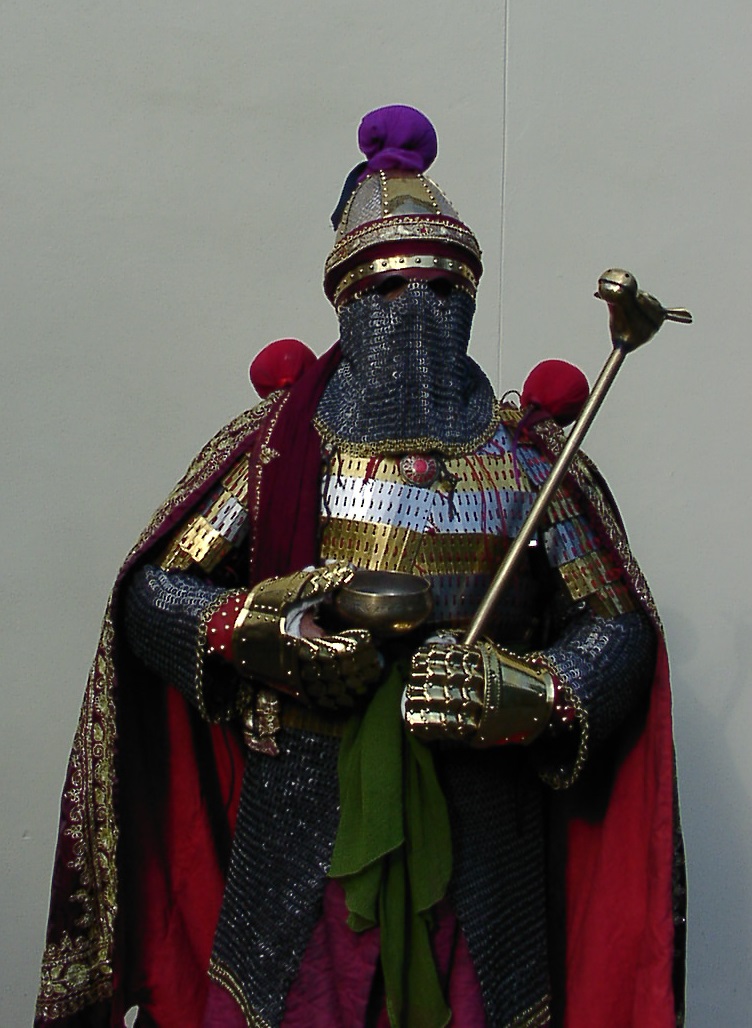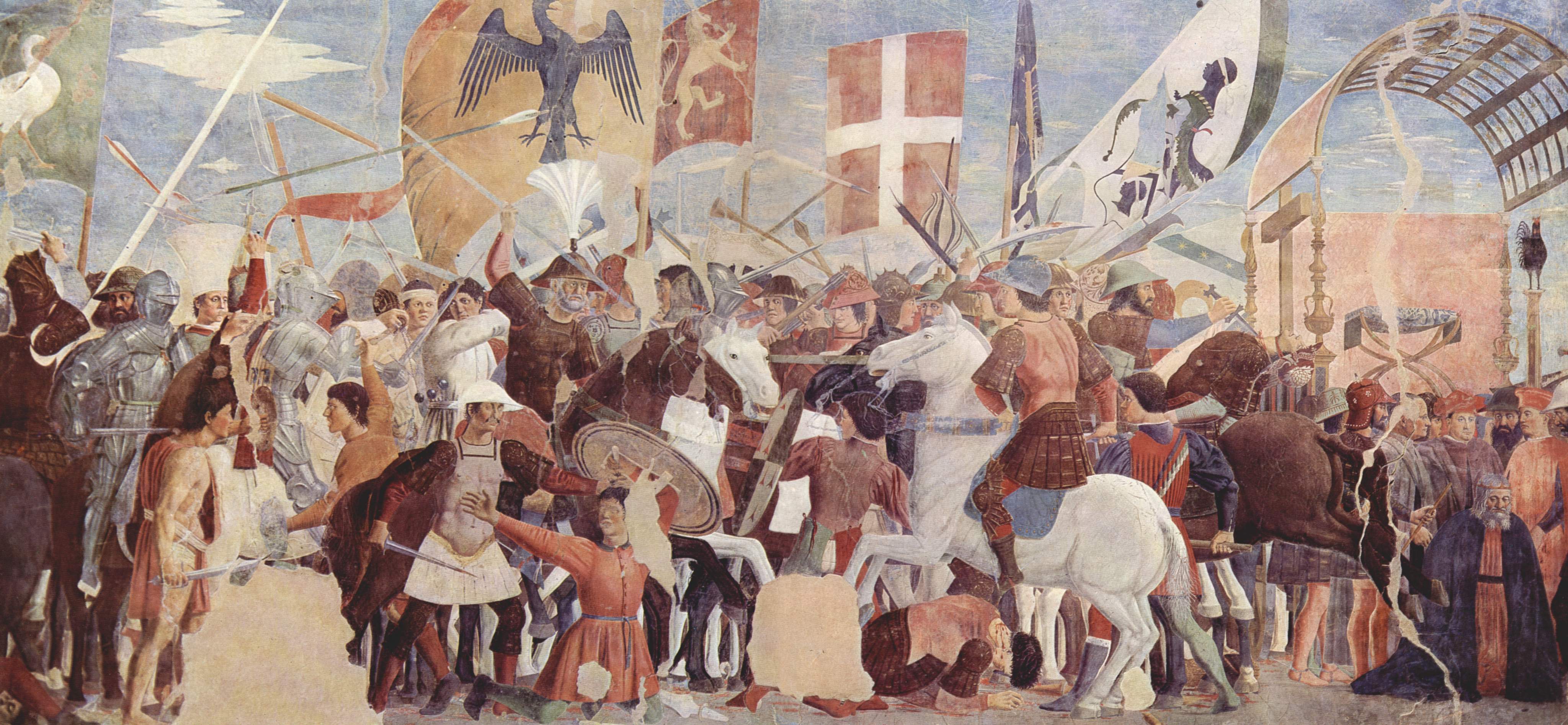|
Sasanian Civil War Of 628–632
The Sasanian civil war of 628–632, also known as the Sasanian Interregnum was a conflict that broke out after the execution of the Sasanian king Khosrau II between the nobles of different factions, notably the Parthian (''Pahlav'') faction, the Persian (''Parsig'') faction, the Nimruzi faction, and the faction of general Shahrbaraz. Rapid turnover of rulers and increasing provincial landholder power further diminished the empire. Over a period of 4 years and 14 successive kings, the Sasanian Empire weakened considerably, and the power of the central authority passed into the hands of its generals, contributing to its fall. Background In 628, Khosrau II was overthrown by the feudal families of Iran, which included The Ispahbudhan ''spahbed'' Farrukh Hormizd and his two sons Rostam Farrokhzad and Farrukhzad. Shahrbaraz of Mihran family, the Armenian faction represented by Varaztirots II Bagratuni, and finally Kanadbak of the Kanārangīyān family. On 25 February, Khosr ... [...More Info...] [...Related Items...] OR: [Wikipedia] [Google] [Baidu] |
Spahbed
''Spāhbed'' (also spelled ''spahbod'' and ''spahbad'') is a Middle Persian title meaning "army chief" used chiefly in the Sasanian Empire. Originally there was a single ''spāhbed'', called the , who functioned as the generalissimo of the Sasanian army. From the time of Khosrow I ( 531–579) on, the office was split in four, with a ''spāhbed'' for each of the cardinal directions.Gyselen (2004) After the Muslim conquest of Persia, the ''spāhbed'' of the East managed to retain his authority over the inaccessible mountainous region of Tabaristan on the southern shore of the Caspian Sea, where the title, often in its Islamic form ( fa, اسپهبذ; in ar, اصبهبذ ), survived as a regnal title until the Mongol conquests of the 13th century.Bosworth (1978), pp. 207–208 An equivalent title of Persian origin, '' ispahsālār or sipahsālār'', gained great currency across the Muslim world in the 10th–15th centuries. The title was also adopted by the Armenians ( hy, � ... [...More Info...] [...Related Items...] OR: [Wikipedia] [Google] [Baidu] |
Khosrau II
Khosrow II (spelled Chosroes II in classical sources; pal, 𐭧𐭥𐭮𐭫𐭥𐭣𐭩, Husrō), also known as Khosrow Parviz (New Persian: , "Khosrow the Victorious"), is considered to be the last great Sasanian king ( shah) of Iran, ruling from 590 to 628, with an interruption of one year. Khosrow II was the son of Hormizd IV (reigned 579–590), and the grandson of Khosrow I (reigned 531–579). He was the last king of Iran to have a lengthy reign before the Muslim conquest of Iran, which began five years after his execution. He lost his throne, then recovered it with the help of the Byzantine emperor Maurice, and, a decade later, went on to emulate the feats of the Achaemenids, conquering the rich Roman provinces of the Middle East; much of his reign was spent in wars with the Byzantine Empire and struggling against usurpers such as Bahram Chobin and Vistahm. After the Byzantines killed Maurice, Khosrow II began a war in 602 against the Byzantines. Khosrow II's ... [...More Info...] [...Related Items...] OR: [Wikipedia] [Google] [Baidu] |
War Indemnity
War reparations are compensation payments made after a war by one side to the other. They are intended to cover damage or injury inflicted during a war. History Making one party pay a war indemnity is a common practice with a long history. Rome imposed large indemnities on Carthage after the First ( Treaty of Lutatius) and Second Punic Wars. Some war reparations induced changes in monetary policy. For example, the French payment following the Franco-Prussian war played a major role in Germany's decision to adopt the gold standard; the 230 million silver taels in reparations imposed on defeated China after the First Sino-Japanese War led Japan to a similar decision. There have been attempts to codify reparations both in the Statutes of the International Criminal Court and the UN Basic Principles on the Right to a Remedy and Reparation for Victims, and some scholars have argued that individuals should have a right to seek compensation for wrongs they sustained during warf ... [...More Info...] [...Related Items...] OR: [Wikipedia] [Google] [Baidu] |
Mihr Hormozd
Mihr Hormozd ( fa, مهرهرمزد, , Mihr Hurmuz) was an Iranian nobleman from the House of Suren. He was the son of Mardanshah, the '' padgospan'' of Nemroz, who was later executed by the orders of the Sasanian king Khosrau II (r. 590-628). In 628, Khosrau was overthrown by his son Kavadh II Shērōē (also spelled Shīrūya, New Persian: ), better known by his dynastic name of Kavad II ( pal, 𐭪𐭥𐭠𐭲 ''Kawād''; New Persian: قباد ''Qobād'' or ''Qabād''), was king (shah) of the Sasanian Empire briefly in 628. He was ... (r. 628), and was taken to prison, where he was shortly executed by Mihr Hormozd who sought to avenge his father's death. However, after the execution, Kavadh had Mihr Hormizd killed. Sources * * Year of birth unknown 628 deaths 7th-century Iranian people House of Suren People executed by the Sasanian Empire Shahnameh characters {{Sasanian-bio-stub ... [...More Info...] [...Related Items...] OR: [Wikipedia] [Google] [Baidu] |
Kavad II
Shērōē (also spelled Shīrūya, New Persian: ), better known by his dynastic name of Kavad II ( pal, 𐭪𐭥𐭠𐭲 ''Kawād''; New Persian: قباد ''Qobād'' or ''Qabād''), was king (shah) of the Sasanian Empire briefly in 628. He was the son of Khosrow II (), whom he succeeded after having him overthrown in a coup d'état. Kavad's reign is seen as a turning point in Sasanian history, and has been argued by some scholars as playing a key role in the fall of the Sasanian Empire. Background and rise Sheroe was the son of Khosrow II, the last prominent king (shah) of the Sasanian Empire, and Maria, a Greek woman, who was reportedly a Byzantine princess. Sheroe was later imprisoned by his father, who wanted to ensure the succession of his favorite son Mardanshah, the son of his favorite wife, Shirin. His father's reputation had been ruined during the last phase of the Byzantine–Sasanian War of 602–628. In 627, the Sasanian general Rhahzadh was slain and Dastger ... [...More Info...] [...Related Items...] OR: [Wikipedia] [Google] [Baidu] |
Khosrow II
Khosrow II (spelled Chosroes II in classical sources; pal, 𐭧𐭥𐭮𐭫𐭥𐭣𐭩, Husrō), also known as Khosrow Parviz (New Persian: , "Khosrow the Victorious"), is considered to be the last great Sasanian king (shah) of Iran, ruling from 590 to 628, with an interruption of one year. Khosrow II was the son of Hormizd IV (reigned 579–590), and the grandson of Khosrow I (reigned 531–579). He was the last king of Iran to have a lengthy reign before the Muslim conquest of Iran, which began five years after his execution. He lost his throne, then recovered it with the help of the Byzantine emperor Maurice, and, a decade later, went on to emulate the feats of the Achaemenids, conquering the rich Roman provinces of the Middle East; much of his reign was spent in wars with the Byzantine Empire and struggling against usurpers such as Bahram Chobin and Vistahm. After the Byzantines killed Maurice, Khosrow II began a war in 602 against the Byzantines. Khosrow II's forc ... [...More Info...] [...Related Items...] OR: [Wikipedia] [Google] [Baidu] |
Aspad Gushnasp
Aspad Gushnasp ( fa, اسپد گشنسپ), known as Gousdanaspa in Byzantine sources, was an Iranian commander (''hazarbed'') of the Sasanian royal guard, who played a key role in the overthrow of the last great Sasanian king (shah) Khosrow II () and the enthronement of the latter's son, Kavad II Sheroe. Biography Aspad Gushnasp was native of Gor, a city in the district of Ardashir-Khwarrah in the Pars province. He was reportedly a foster brother of Sheroe. There are various versions of his name and title in several sources; his name is given as Asfad Jushnas by al-Tabari, and was the "head of an army division"; his name is given as Astad Kushnash by Ali ibn al-Athir; Yazdan Jushnas by Dinavari, who states that he was "chief of secretaries"; Asfad Jushnas by Bal'ami, who calls him one of the ''mehtarān-e dabīrān'' ("chief secretaries"); Asfad Gushnasb by al-Tha'alibi; Gousdanaspa in Byzantine sources, where he is often described as the leader or ''hazarbed'' of the Sasanian ... [...More Info...] [...Related Items...] OR: [Wikipedia] [Google] [Baidu] |
Kanarang
The ''kanārang'' ( fa, کنارنگ) was a unique title in the Sasanian military, given to the commander of the Sasanian Empire's northeasternmost frontier province, Abarshahr (encompassing the cities of Nishapur, Tus and Abiward). In Byzantine sources, it is rendered as ''chanaranges'' ( el, χαναράγγης) and often used, for instance by Procopius, in lieu of the holder's actual name. The title was used instead of the more conventional ''marzban'', which was held by the rest of the Iranian frontier wardens. Like the other ''marzbans'', the position was hereditary. The family holding it (the ''Kanarangiyan'') is first attested in the reign of Yazdegerd I (r. 399–421), but was descended from some pre-Sasanian, most likely Parthian, dynasty. They enjoyed a high prestige and great authority in the Sasanian Empire's northeastern borderlands, as reflected in their glorified description in the ''Shahnameh'' of the great Persian poet Ferdowsi. They were among the great fa ... [...More Info...] [...Related Items...] OR: [Wikipedia] [Google] [Baidu] |
Kanadbak
Kanadbak, also known as Kanara, was an Iranian nobleman, who was the ''kanarang'' during the reign of the Sasanian king Khosrau II (r. 590–628), and various other Sasanian monarchs, which includes Yazdegerd III (r. 632–651), the last Sasanian king. Biography Kanadbak is first mentioned in 628, as one of the conspirators who overthrew Khosrau II. After Khosrau's overthrow, his son Kavadh II crowned himself as ''shahanshah'' of the Sasanian Empire. Three days later, Kavadh ordered Mihr Hormozd to execute his father. In 632, after a period of coups and revolts, Yazdegerd III was crowned as king of the Sasanian Empire at Estakhr. One year later, the Muslim Arabs invaded Persia, and by 636, they were camping at Al-Qādisiyyah, a city close to Ctesiphon, the capital of the Sasanian Empire. The Sasanian ''spahbed'', Rostam Farrokhzad, then prepared a counter-attack, and prepared an army which included: The Parsig faction under Piruz Khosrow, Bahman Jadhuyih and Hormuzan. The P ... [...More Info...] [...Related Items...] OR: [Wikipedia] [Google] [Baidu] |
Varaztirots II Bagratuni
Varaztirots II Bagratuni ( hy, Վարազ-Տիրոց Բ Բագրատունի; c. 590 – 645) was an Armenian ''nakharar'' from the Bagratuni family, the son of Smbat IV Bagratuni. He was ''marzpan'' of Armenia c. 628, fled to the Byzantine Empire soon thereafter and was exiled for several years to Africa for his participation in a plot against Heraclius. On his return c. 645/6, he was named '' curopalates'' and presiding prince of Armenia, but died before being formally invested. Life Varaztirots was the eldest son of Smbat IV Bagratuni. Along with his brother Garikhpet, he grew up in the Sassanid Persian court of Khosrau II (r. 591–628). Following the defeat of the rebellion of Vistahm, in which his father was instrumental, Varaztirots was named a royal cupbearer. At that point, or after Smbat's victory over the Hephthalites in 608, he also received the honorific name ''Javitean Khosrow'' ("Eternal Khosrau").Martindale, Jones & Morris (1992), pp. 1363–1364 In 628, Khosr ... [...More Info...] [...Related Items...] OR: [Wikipedia] [Google] [Baidu] |
House Of Mihran
The House of Mihrān or House of Mehrān (Middle Persian: 𐭬𐭨𐭥𐭠𐭭; new Persian: مهران), was a leading Iranian noble family (''šahrdārān''), one of the Seven Great Houses of the Sassanid Persian Empire which claimed descent from the earlier Arsacid dynasty. A branch of the family formed the Mihranid line of the kings of Caucasian Albania and the Chosroid Dynasty of Kartli. History First mentioned in a mid-3rd-century CE trilingual inscription at the '' Ka'ba-i Zartosht'', concerning the political, military, and religious activities of Shapur I, the second Sassanid king of Iran, the family remained the hereditary "margraves" of Ray throughout the Sassanid period. Several members of the family served as generals in the Roman–Persian Wars, where they are mentioned simply as Mihran or , ''mirranēs'', in Greek sources. Indeed, Procopius, in his ''History of the Wars'', holds that the family name ''Mihran'' is a title equivalent to General. Notable gen ... [...More Info...] [...Related Items...] OR: [Wikipedia] [Google] [Baidu] |
Ispahbudhan
The House of Ispahbudhan or the House of Aspahbadh was one of the seven Parthian clans of the Sasanian Empire. Like the Sasanians, they claimed descent from the Achaemenid dynasty. They also claimed descent from the legendary Kayanid figure Isfandiyar, who was the son of Vishtaspa, who according to Zoroastrian sources was one of Zoroaster's early followers. Origin and ancestry The family traced its descent back to military marshals (''spahbed''), and occupied important offices in the realm. According to a romanticized legend about their origin, a daughter of the Parthian/Arsacid king Phraates IV (), named Koshm, married a "general of all Iranians"; their offspring bore the title of "Aspahpet Pahlav", later forming the Ispahbudhan clan. Through their Arsacid lineage, the Ispahbudhan claimed to be descendants of the Kayanian kings Dara II and Esfandiyar. History Under the Sasanians, the Ispahbudhan enjoyed such a high status that they were acknowledged as "kin and partners of ... [...More Info...] [...Related Items...] OR: [Wikipedia] [Google] [Baidu] |
%2C_Meshan_mint.jpg)


